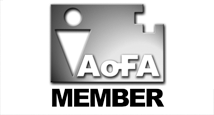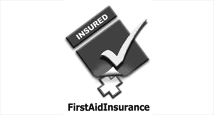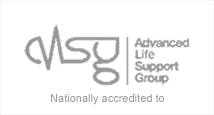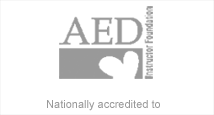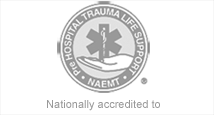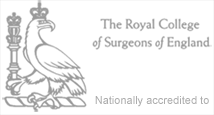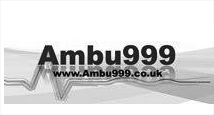News Items
- 05-Feb-2012
"ALSG approved Safe Transfer & Retrieval (STaR) course, Belfast - November 08th & 09th 2012" - 09-Oct-2011
"Survival-linX Solutions on-line Classrom & Education Centre" - 24-Sep-2011
"RIDDOR - Changes to incident reporting" - 12-Mar-2011
"Do you know what to do if a child is choking?" - 12-Mar-2011
"Anaphylaxis - recognition and management" - 12-Mar-2011
"Join use on Facebook - for all the latest discusions, first aid advice and general resuscitation information" - 12-Mar-2011
"Does your Surgery need Life Support (CPR) & Automated Defibrillator (AED) Training?" - 12-Mar-2011
"Resuscitation Council (UK) Emergency Life Support in Schools" - 04-Nov-2010
"2010 Resuscitation Guidelines - Summary of main changes" - 07-Sep-2010
"Do you have a Automated Defibrillator in your place off work?" - 24-Nov-2009
"Survival-linX Solutions gains HSENI certificate of approval to provide first aid at work (FAW) training courses." - 07-Nov-2009
"Risks of pandemic H1N1 2009 influenza (swine influenza) during cardiopulmonary resuscitation (CPR)" - 19-Oct-2008
"Are you thinking of purchasing an Automated External Defibrillator(AED) - essential infomation to assist you when choosing the correct unit." - 09-Aug-2008
"An account of the formation of the foramen ovale and how blood entering the inferior vena cava receives preferential blood streaming in the foetus." - 31-Aug-2007
"Mechanical CPR - Lund University Cardiopulmonary Assist System (LUCAS)" - 02-Jun-2003
"Significant increase in training for Health Care professionals likely to be called to assist children with trachestomy tube difficulties"
Do you know what to do if a child is choking?
12-Mar-2011
Choking occurs when something blocks the airway. When the airway is completely blocked, then you cannot breathe. Choking can be a frightening emergency. If you act quickly, you can help the choking victim breathe.
Do you you know what to do if a child or adult is choking?
Signs of Choking.
Choking occurs when something blocks the airway. When the airway is completely blocked, then you cannot breathe. Choking can be a frightening emergency. If you act quickly, you can help the choking victim breathe.
...
NB. If the casualty can speak or cough loudly, the airway is only partly blocked and you should not attempt choking techniques. Encourage them to cough and if you are worried about the breathing, phone 9-9-9.
Choking techiques should be attempted when the airway is completely blocked or if the choking victim can no longer cough effectively, they may have high-pitched, noisy breathing
and in the older child/adult may make the choking sign (holding the neck with one or both hands)
Actions to Relieve Choking.
When a child/adult is choking and can't breathe or speak, you must give back slaps however if this is unsucessful then abdominal thrusts (the Heimlich maneuver) may be required.
Adult choking sequence (This sequence is also suitable for use in children over the age of 1 year)
1 If the victim shows signs of mild airway obstruction: Encourage him to continue coughing, but do nothing else.
2 If the victim shows signs of severe airway obstruction and is
conscious:
Give up to five back blows.
Stand to the side and slightly behind the victim.
Support the chest with one hand and lean the victim well forwards so that when the obstructing object is dislodged it
comes out of the mouth rather than goes further down the
airway.
Give up to five sharp blows between the shoulder blades with the heel of your other hand.
Check to see if each back blow has relieved the airway obstruction.
The aim is to relieve the obstruction with each blow rather than
necessarily to give all five.
If five back blows fail to relieve the airway obstruction give up to five abdominal thrusts. Stand behind the victim and put both arms round the upperpart of his abdomen. Lean the victim forwards. Clench your fist and place it between the umbilicus (navel) and the bottom end of the sternum (breastbone). Grasp this hand with your other hand and pull sharply inwards and upwards. Repeat up to five times.
If the obstruction is still not relieved, continue alternating five backblows with five abdominal thrusts.
3 If the victim becomes unconscious:
Support the victim carefully to the ground.
Immediately call an ambulance.
Begin CPR . .
Never perform abdominal thrusts on a baby(<1yr) or a pregnant woman.
Signs of Choking.
Choking occurs when something blocks the airway. When the airway is completely blocked, then you cannot breathe. Choking can be a frightening emergency. If you act quickly, you can help the choking victim breathe.
...
NB. If the casualty can speak or cough loudly, the airway is only partly blocked and you should not attempt choking techniques. Encourage them to cough and if you are worried about the breathing, phone 9-9-9.
Choking techiques should be attempted when the airway is completely blocked or if the choking victim can no longer cough effectively, they may have high-pitched, noisy breathing
and in the older child/adult may make the choking sign (holding the neck with one or both hands)
Actions to Relieve Choking.
When a child/adult is choking and can't breathe or speak, you must give back slaps however if this is unsucessful then abdominal thrusts (the Heimlich maneuver) may be required.
Adult choking sequence (This sequence is also suitable for use in children over the age of 1 year)
1 If the victim shows signs of mild airway obstruction: Encourage him to continue coughing, but do nothing else.
2 If the victim shows signs of severe airway obstruction and is
conscious:
Give up to five back blows.
Stand to the side and slightly behind the victim.
Support the chest with one hand and lean the victim well forwards so that when the obstructing object is dislodged it
comes out of the mouth rather than goes further down the
airway.
Give up to five sharp blows between the shoulder blades with the heel of your other hand.
Check to see if each back blow has relieved the airway obstruction.
The aim is to relieve the obstruction with each blow rather than
necessarily to give all five.
If five back blows fail to relieve the airway obstruction give up to five abdominal thrusts. Stand behind the victim and put both arms round the upperpart of his abdomen. Lean the victim forwards. Clench your fist and place it between the umbilicus (navel) and the bottom end of the sternum (breastbone). Grasp this hand with your other hand and pull sharply inwards and upwards. Repeat up to five times.
If the obstruction is still not relieved, continue alternating five backblows with five abdominal thrusts.
3 If the victim becomes unconscious:
Support the victim carefully to the ground.
Immediately call an ambulance.
Begin CPR . .
Never perform abdominal thrusts on a baby(<1yr) or a pregnant woman.
Register
To access our members content please login here.
If you do not have access please register here to access our members section. If you have forgotten your password please click here to reset your password.
If you do not have access please register here to access our members section. If you have forgotten your password please click here to reset your password.
Contact Us
| Address | PO Box 1491 Dungannon BT71 5YF |
| Telephone: | 028 8774 6864 |
| Mobile: | 079 7662 1643 |
| Email: | info@survival-linx.com |
Site last updated 04/12/2025 09:26:47


